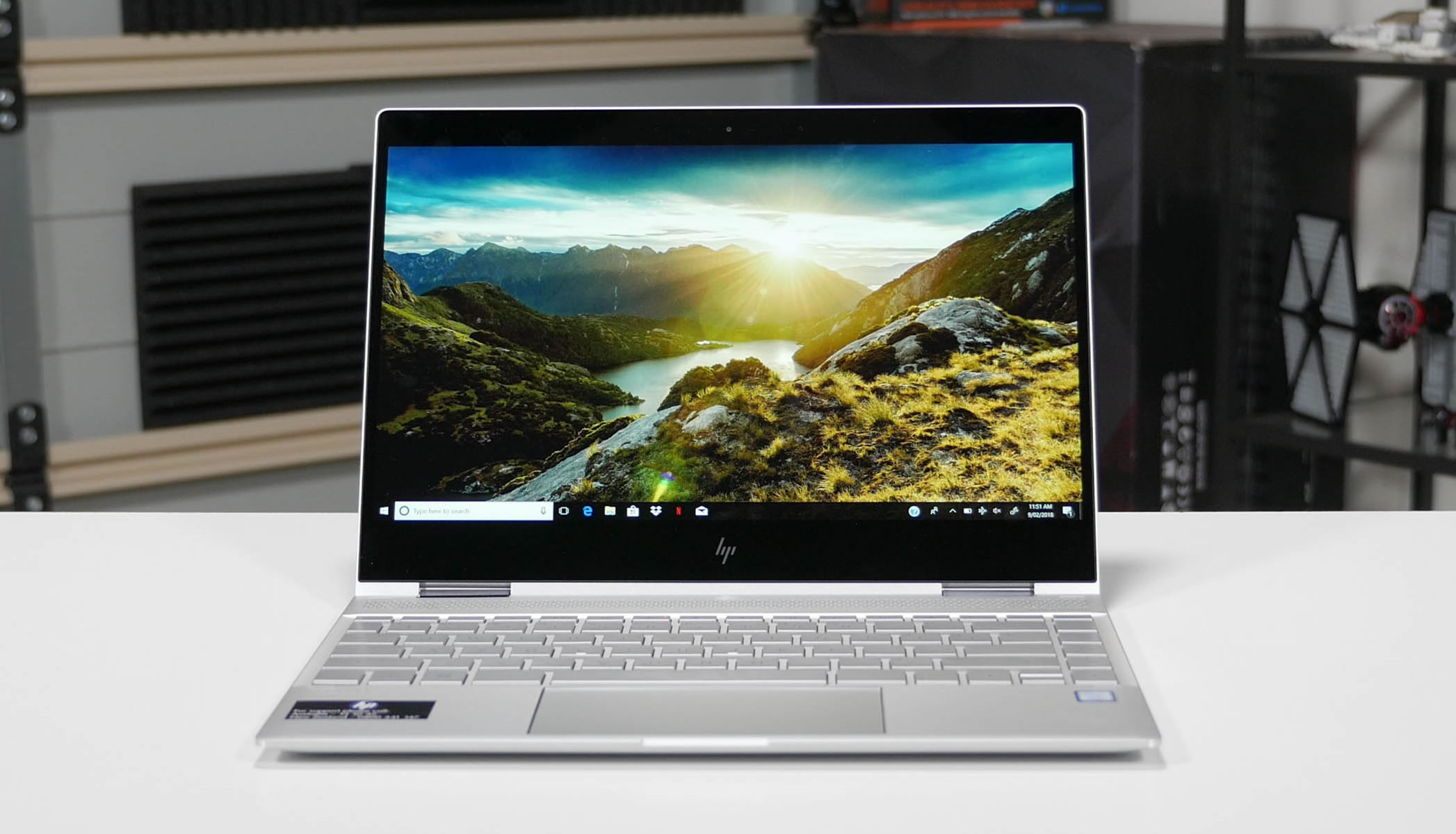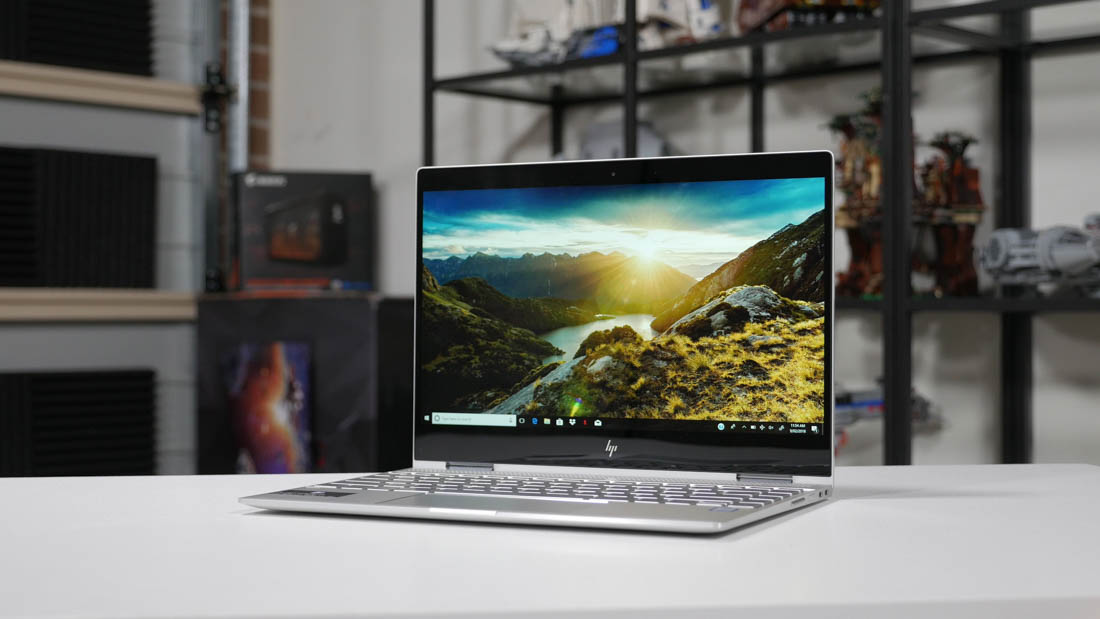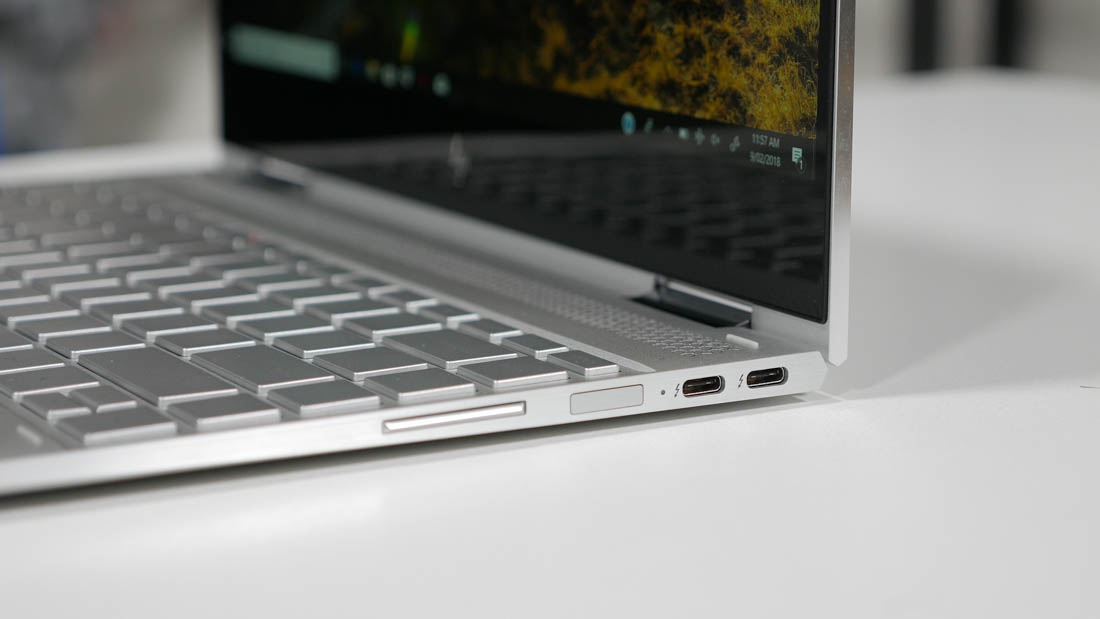The new HP Spectre 13 x360 is an interesting ultraportable. Like its predecessor that we reviewed a year ago, it sits at the top of HP's product line-up alongside its non-convertible Spectre brother. And like many laptops released in the last few months, it is powered by Intel's latest quad-core 8th gen mobile CPUs. However, as it turns out, not every 8th gen laptop is created the same.
HP likes to talk about the Spectre's 360-degree hinge and the four possible modes 'engineered to amaze', which include the standard laptop mode, the tablet mode, and what are essentially two different stand modes. It's nice to have these modes (not unlike a competing Yoga) but 95% of the time I use convertible systems in the laptop mode. It might be different for some buyers, but I almost exclusively use the Spectre x360 as a laptop.
And really there's nothing wrong with that, because while the x360 does have a flexible hinge, its tablet and stand abilities take nothing away from its usability as a laptop. The engineers probably did slave over the intricacies of the hinge, and as a result the hinge works really well, but this is still a great laptop if you never use the hinge to its full capabilities.
The reason why it's so good comes down to a number of factors. Like its predecessor, the new Spectre x360 is super slim and quite light. In fact, this newer model is 0.2mm slimmer, at 13.6mm thin and 2.8 pounds (1.3kg) it is perfect for a laptop of this size.
Another factor is the build quality, and that's really what you're paying for with a laptop at this price. When I'm spending at least $1,000 on a machine, I want a beautiful metal build, and HP has delivered here with one of the best chassis on the market.
The style is modern, clean and makes full use aluminum. The unibody construction feels strong and dependable, plus the matte finish looks fantastic and resists fingerprints. The glossy black glass surrounding the display complements it all quite well.
Slim laptops tend to come with a few compromises, and that's somewhat the case with the Spectre x360. You do get two Thunderbolt 3 ports with a full four lanes of PCIe, either of which can be used for charging, but just one USB-A port and no full-sized SD card slot, though there is a microSD slot. A second USB-A port would have been great for those who already have a lot of USB-A accessories, and a proper SD card slot would have been even better.
The speakers are also average even with their Bang & Olufsen branding. On a more positive note, HP has included two forms of Windows Hello authentication with this latest Spectre: face recognition and a fingerprint reader along the edge. The position of the fingerprint reader is a bit strange, though it's nice to have.
The keyboard uses the same fantastic slim switches as most of HP's recent laptops, giving a surprisingly clicky response from what is still a rubber-dome design. The typing experience is pure joy on this machine, provided you get your head around the inclusion of page up and down keys to the right of the enter and shift keys. The Synaptics trackpad isn't bad either, and also appears unchanged from previous Spectre devices.
Display-wise, HP uses a semi-slim bezel design with thin borders to the left and right, and larger panels above and below. This sort of design works well, allowing enough space for the keyboard, battery and so forth without making the body overly large. It's not at Dell XPS 13 levels, however that does allow the webcam to sit in a more appropriate position.
The display itself comes in several options. Most buyers will end up with the 1080p panel, like I got in my review unit, though a 4K panel is available with top-end models. It's 13.3-inches in size and uses IPS LCD technology.
The display performs similarly to the previous model: a 301 nit maximum brightness, 1100:1 contrast ratio, default color temperature around 7500K, and average color performance with greyscale, saturation and ColorChecker deltas ranging between 3.0 and 5.5. Colors are slightly more accurate with this new model, though it's not by enough to make the default performance suitable for professionals that demand accuracy.
With a bit of light calibration the Spectre x360 can be pulled back into line, with accurate greyscale and colors across the board. However, this does impact brightness, with a 50 nit reduction to peak levels, and contrast takes a small hit, falling down to just under 1000:1. Plus to achieve this performance you need external hardware and software that isn't particularly cheap.







